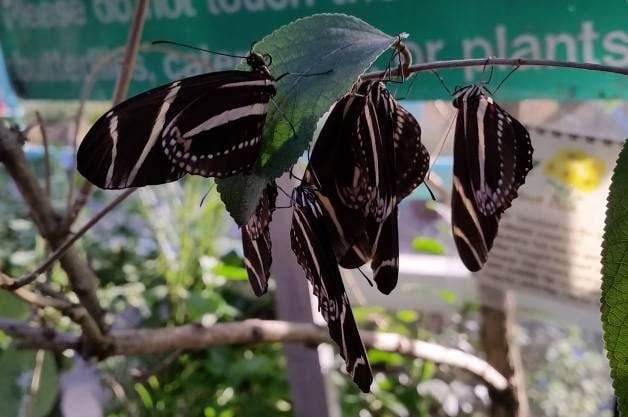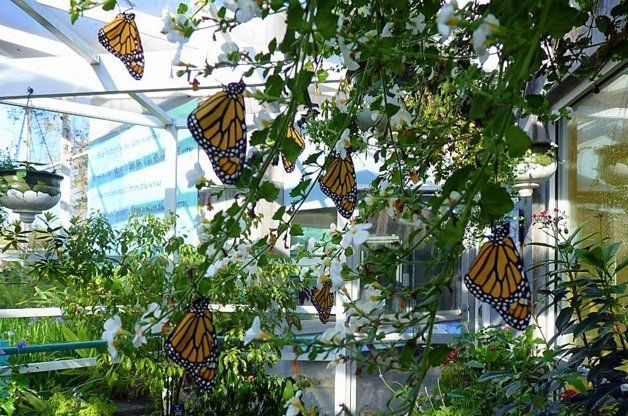Roosting in the Butterfly Garden
Updated: Apr. 24, 2020
When butterflies need to rest or take shelter, they find a place to roost. Learn how to make your butterfly garden a safe place for roosting.
The word “roost” probably brings to mind chickens perched on their nests, snuggling down for the night. But chickens aren’t the only things with wings who make roosting a part of their regular activity – butterflies do it too! Sometimes species roost on their own, while others prefer large groups, but all butterflies need safe places to take shelter from time to time, and your butterfly garden can help provide those spaces.

Roosting is the word used to describe butterflies at rest for more than a few minutes at a time. All butterfly species roost overnight, and during wet or chilly weather. Some species even roost all winter long, such as the migratory monarch population that overwinters in Mexico. During the roosting period, butterflies sometimes enter a state known as “torpor“, in which they drop their body temperature, heartbeat, and respiration as low as possible to conserve energy.

Most butterflies roost upside-down under the shelter of leaves, but others choose cracks in rocks or the trunks of trees. Because butterflies are most vulnerable when they’re at rest and unaware of their surroundings, it’s vital that they blend in to avoid the notice of predators. Most butterflies have duller patterns on the undersides of their wings that will help them camouflage or fade into the background as they roost. Some butterflies, like Zebra Longwings (Heliconius charithonia), roost in large groups at night, seeming as if they’re huddling for warmth!

In your own butterfly garden, you can help roosting butterflies by providing places for them to take shelter. Some companies offer so-called “butterfly houses” for this purpose, but in my own experience, butterflies rarely use these and they generally just wind up providing a place for wasps to build nests. Instead, be sure to make shrubs, tall grasses, and even trees a part of your butterfly garden. Snags of dead branches or rock piles can also provide shelter. Most importantly, if you come across roosting butterflies, resist the urge to touch them, even just “to see if they’re still alive”. These butterflies will move when they’re good and ready, so don’t risk damage to their wings by poking and prodding.